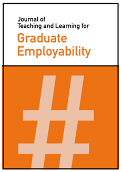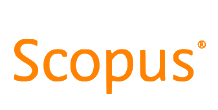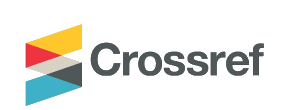Equity and employability: A study into the challenges faced by healthcare learners with a disability and/or learners pursuing part-time work
DOI:
https://doi.org/10.21153/jtlge2023vol14no2art1791Abstract
An increasing amount of evidence suggests that learners within Higher Education (HE), and graduates, are struggling with their transition into the workplace. With the increased prominence of workplace learning requirements, these challenges are becoming more evident for learners during HE studies. This study aimed to identify the challenges faced by learners and graduates transitioning into the healthcare workforce, and the challenges experienced by key groups such as healthcare employers and other influencers within HE. The key focus was on disability, part-time work and transitions into the workplace. Thirty-two individuals participated in an online survey focused on equity and employability. Questions were both quantitative and qualitative in nature. Participants were learners, graduates, academics, career advisory staff, and employers. Thematic analysis of the qualitative data identified eight themes. Challenges identified by participants included work-life balance, stigma and stereotypes, organisational and individual empowerment, navigating additional administrations tasks, information and signposting, consistency in language and messaging, advocacy, and exemplars for guidance. The study highlights the responsibilities of all involved with HE provision, and the importance of collaboration with employers to inform, educate and advocate for all learners to maximize employability opportunities and enhance transitions into employment. Policy and practice in this area should quality assure the robustness of the support, aiming to meet individual needs, including education to empower and facilitate individual agency, as well as reviewing the visibility and accessibility of resources.Metrics
References
Aliu, J., & Aigbavboa, C. (2022). Examining Pedagogical Approaches in Developing Employability Skills in the Wake of the COVID-19 Pandemic. In R.J . Howlett, L.C. L.C. Jain, J.R. Littlewood, and M.M. Balas (Eds.), Smart and Sustainable Technology for Resilient Cities and Communities (pp. 11-28). Springer. http://dx.doi.org/10.1007/978-981-16-9101-0_2
Andrewartha, L., & Harvey, A. (2017). Employability and student equity in higher education: The role of university careers services. Australian Journal of Career Development, 26(2), 71-80. https://doi.org/10.1177/1038416217718365
Areheart, B. A., & Stein, M. A. (2015). The Disability–Employability Divide: Bottlenecks to Equal Opportunity Michigan Law Review, 113(6). https://repository.law.umich.edu/mlr/vol113/iss6/7
Bennett, D. (2019, July). Graduate employability and higher education: Past, present and future. HERDSA Review of Higher Education, 5, 31-61
Bonaccio, S., Connelly, C., Gellatly, I., Jetha, A., & Ginis, K. (2020). The Participation of People with Disabilities in the Workplace Across the Employment Cycle Employer Concerns and Research Evidence. Journal of Business and Psychology, 35, 135-58. https://doi.org/10.1007/s10869-018-9602-5
Bureau of Labour Statistics. (2023). Persons with a disability: Labour force charateristices - 2022. US Department of Labor. https://www.bls.gov/news.release/pdf/disabl.pdf
Braun, V., Clarke, V., & Gray, D. (2017). Innovations in qualitative methods. In B. Gough (Ed.), The Palgrave handbook of critical social psychology (pp. 243-266). Springer. https://psycnet.apa.org/doi/10.1057/978-1-137-51018-1_13
Braun, V., Clarke, V., & Weate, P. (2016). Using thematic analysis in sport and exercise research. In B. Smith & A.C. Sparkes (Eds.), Routledge handbook of qualitative research in sport and exercise (pp. 213-227). Routledge. https://doi.org/10.4324/9781315762012
Bridgstock, R., & Jackson, D. (2019). Strategic institutional approaches to graduate employability: Navigating meanings, measurements and what really matters. Journal of Higher Education Policy and Management, 41(5), 468-484. https://doi.org/10.1080/1360080X.2019.1646378
Chung, H. (2020). Gender, flexibility stigma and the perceived negative consequences of flexible working in the UK. Social Indicators Research, 151(2), 521-545. https://doi.org/10.1007/s11205-018-2036-7
Chung, H., & Van der Lippe, T. (2020). Flexible working, work–life balance, and gender equality: Introduction. Social Indicators Research, 151(2), 365-381. https://doi.org/10.1007/s11205-018-2025-x
Dalrymple, R., Macrae, A., Pal, M., & Shipman, S. (2021). Employability: A review of the literature 2016-2021. York: Advance HE. https://www.advance-he.ac.uk/knowledge-hub/employability-review-literature-2016-2021
Deckoff-Jones, A., & Duell, M. N. (2018). Perceptions of appropriateness of accommodations for university students: Does disability type matter? Rehabilitation Psychology, 63(1), 68-76. https://doi.org/10.1037/rep0000213
Department for Work & Pensions. (2022, February). The employment of disabled people 2021. UK Government. https://www.gov.uk/government/statistics/the-employment-of-disabled-people-2021/the-employment-of-disabled-people-2021
Department of Health. (2001). Improving Working Lives in the NHS (IWL). UK Government.
Dollinger, M., Finneran, R., & Ajjawi, R. (2022). Exploring the experiences of students with disabilities in work-integrated learning. Journal of Higher Education Policy and Management, 45(1), 3-18. https://doi.org/10.1080/1360080X.2022.2129317
Ebrahim, A., Lorenzo, T., & Kathard, H. (2022). Traversing Disability: Employers’ Perspectives of Disability Inclusion. Disabilities, 2(2), 317-329. https://doi.org/10.3390/disabilities2020023
Galer, D. (2018). Working towards equity: Disability rights activism and employment in late twentieth-century Canada. University of Toronto Press. https://doi.org/10.3138/9781487512910
Gatto, L. E., Pearce, H., Plesca, M., & Antonie, L. (2021). Students with Disabilities: Relationship between Participation Rates and Perceptions of Work-Integrated Learning by Disability Type. International Journal of Work-Integrated Learning, 22(3), 287-306. https://www.ijwil.org/files/IJWIL_22_3_287_306.pdf
Heymann, J., Stein, M. A., & Moreno, G. (2013). Disability and equity at work. Oxford University Press. https://doi.org/10.1093/acprof:oso/9780199981212.001.0001
Jakovljevic, M., & Buckley, S. (2011). Assistive technologies in a workplace environment: Barriers for the employment of persons with disabilities. Disability CBR & Inclusive Development, 22(2), 55-78. https://remotevoicetechnologies.com/publications/Publications_2011_to_2018/3_DCIDJ_2011_Jakovljevic_Buckley.pdf
Jamieson, M., Govaart, G., & Pownall, M. (2023) Reflexivity in quantitative research: A rationale and beginner's guide. Social and Personality Psychology Compass, 17(4). https://doi.org/10.1111/spc3.12735
Knight, P. T., & Yorke, M. (2002). Employability through the curriculum. Tertiary Education and Management, 8(4), 261-276. https://doi.org/10.1080/13583883.2002.9967084
Kwan, C. K. (2021). Helping people with disabilities in the workplace: Mezzo-level interventions targeting corporate culture. Social work, 66(4), 339-347. https://doi.org/10.1093/sw/swab030
Lyonette, C., Baldauf, B., & Behle, H. (2010). 'Quality'Part-time Work: A Review of the Evidence. Institute for Employment Research, University of Warwick. https://warwick.ac.uk/fac/soc/ier/publications/2010/lyonette_2010_geo_review_of_evidence.pdf
Manning, A., & Petrongolo, B. (2008). The part‐time pay penalty for women in Britain. The Economic Journal, 118(526), F28-F51. https://doi.org/10.1111/j.1468-0297.2007.02115.x
Moriña, A., & Biagiotti, G. (2022). Inclusion at university, transition to employment and employability of graduates with disabilities: A systematic review. International Journal of Educational Development, 93. https://doi.org/10.1016/j.ijedudev.2022.102647
Nightingale, M. (2019). Looking beyond average earnings: why are male and female part-time employees in the UK more likely to be low paid than their full-time counterparts? Work, Employment and Society, 33(1), 131-148. https://doi.org/10.1177/0950017018796471
Nolan, C., Gleeson, C., Treanor, D., & Madigan, S. (2015). Higher education students registered with disability services and practice educators: issues and concerns for professional placements. International Journal of Inclusive Education, 19(5), 487-502. http://dx.doi.org/10.1080/13603116.2014.943306
Nolan, C., & Gleeson, C. I. (2017). The transition to employment: the perspectives of students and graduates with disabilities. Scandinavian Journal of Disability Research, 19(3), 230-244. https://doi.org/10.1080/15017419.2016.1240102
Office for Students. (2020, June 25). Coronovirus briefing note. https://www.officeforstudents.org.uk/media/8f61cef7-4cf7-480a-8f73-3e6c51b05e54/coronavirus-briefing-note-disabled-students.pdf
Olney, S. (2021). Inclusion, Work and Wellbeing: Shifting Perceptions of Disability and Employability Through the National Disability Insurance Scheme. In M. Cowden & C. McCullagh (Eds.), The National Disability Insurance Scheme (pp. 285-304). Springer. http://dx.doi.org/10.1007/978-981-16-2244-1_15
Paz-Maldonado, E., & Silva-Peña, I. (2021). Employability of people with disabilities in Latin America. Saúde e Sociedade, 29. https://doi.org/10.1590/S0104-12902020190724
Pham, T., & Soltani, B. (2021). Enhancing Student Education Transitions and Employability: From Theory to Practice. Routledge.
Sing, D. (2012). Promoting the employability and employment of people with disabilities in the South African public service. Public Personnel Management, 41(1), 161-171. https://doi.org/10.1177/009102601204100109
Singh, A., & Singh, S. (2021). Do Employability Skills Matter in Placement: An Exploratory Study of Private Engineering Institutions and IT Firms in Delhi NCR. The Indian Journal of Labour Economics, 64(4), 1093-1113. https://doi.org/10.1007/s41027-021-00341-x
Smith, B., & McGannon, K. R. (2018). Developing rigor in qualitative research: Problems and opportunities within sport and exercise psychology. International review of sport and exercise psychology, 11(1), 101-121. https://doi-org.uea.idm.oclc.org/10.1080/1750984X.2017.1317357
Stevens, G. R. (2002). Employers' perceptions and practice in the employability of disabled people: a survey of companies in south east UK. Disability & Society, 17(7), 779-796. http://dx.doi.org/10.1080/0968759022000039073
Stovell, C., & Besamusca, J. (2022). Full-time hours, part-time work: questioning the sufficiency of working hours as a measure of employment status. Community, Work & Family, 25(1), 63-83. https://doi.org/10.1080/13668803.2021.1991888
Tai, J. H.-M., Dollinger, M., Ajjawi, R., Jorre de St Jorre, T., Krattli, S., McCarthy, D., & Prezioso, D. (2022). Designing assessment for inclusion: an exploration of diverse students’ assessment experiences. Assessment & Evaluation in Higher Education, 48(3) 403-417. https://doi.org/10.1080/02602938.2022.2082373
Taylor, L. E. (2016). How to develop your healthcare career: A guide to employability and professional development. John Wiley & Sons.
Thompson, D., & Brewster, S. (2022). Inclusive placement learning for diverse higher education students: anxiety, uncertainty and opportunity. Educational Review, 1-19. http://dx.doi.org/10.1080/00131911.2021.2023470
Toerien, M., & Wilkinson, S. (2004). Exploring the depilation norm: a qualitative questionnaire study of women's body hair removal. Qualitative Research in Psychology, 1(1), 69-92. https://doi.org/10.1191/1478088704qp006oa
Tomlinson, M. (2017). Forms of graduate capital and their relationship to graduate employability. Education+ Training, 59(4), 338-352. https://doi.org/10.1108/ET-05-2016-0090
United Kingdom Government. (2022, September 9). Full time and part time employment. Ethnicity facts and figures. https://www.ethnicity-facts-figures.service.gov.uk/work-pay-and-benefits/employment/full-time-and-part-time-employment/latest
van Osch, Y., & Schaveling, J. (2020). The effects of part-time employment and gender on organizational career growth. Journal of Career Development, 47(3), 328-343. https://doi.org/10.1177/0894845317728359
Walsh, J. (2007). Experiencing part‐time work: Temporal tensions, social relations and the work–Family interface. British Journal of Industrial Relations, 45(1), 155-177. https://doi.org/10.1111/j.1467-8543.2007.00606.x
Wilkinson, S., & Kitzinger, C. (1996). Representing the other: A feminism & psychology reader. Sage.
Downloads
Published
Issue
Section
License
Copyright (c) 2023 Professor Lisa Taylor, Charmaine Chandler, Associate Professor Stephanie Jong

This work is licensed under a Creative Commons Attribution-NonCommercial 4.0 International License.












